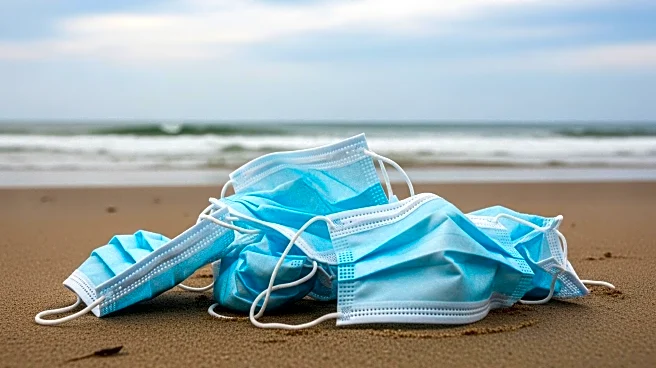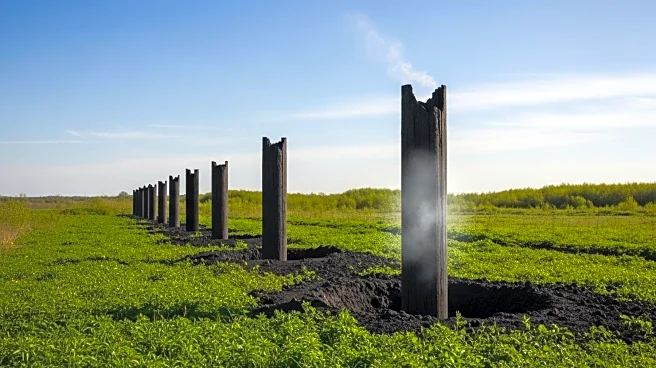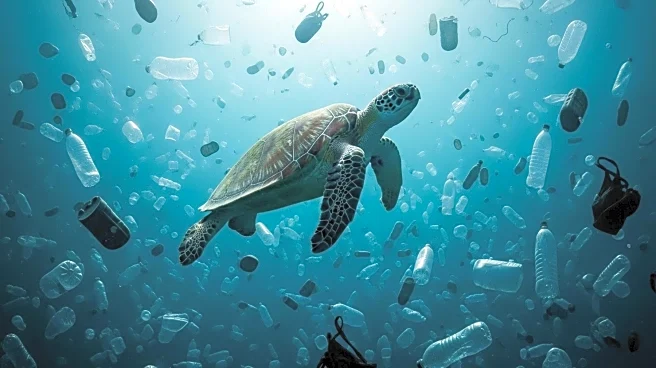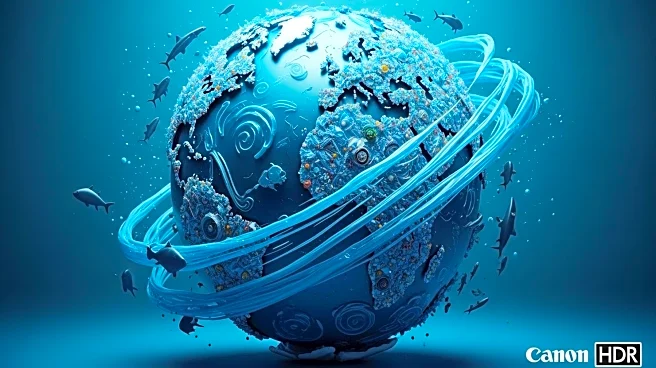What's Happening?
Research from Coventry University has revealed that disposable face masks used during the Covid pandemic have created a chemical timebomb, posing risks to humans, animals, and the environment. Billions of plastic masks are breaking down, releasing microplastics and chemical additives, including endocrine disruptors. The study emphasizes the need to rethink the production, use, and disposal of face masks. During the pandemic, 129 billion masks were used monthly worldwide, with most ending up in landfills or littered environments. The research found that masks leach microplastics and bisphenol B, an endocrine-disrupting chemical, into the environment, highlighting the long-term impact of single-use masks.
Why It's Important?
The environmental impact of disposable face masks is significant, as they contribute to plastic pollution and release harmful chemicals into ecosystems. The presence of microplastics and endocrine disruptors poses health risks to humans and wildlife, potentially affecting reproductive and developmental processes. The study underscores the importance of developing sustainable alternatives and improving waste management practices to mitigate these risks. Raising awareness about the environmental cost of single-use masks can drive policy changes and encourage the adoption of eco-friendly products. Addressing the issue of mask pollution is crucial for protecting public health and preserving natural habitats.
What's Next?
Efforts to address the environmental impact of disposable masks may include the development of biodegradable alternatives and improved recycling systems. Policymakers and environmental organizations may advocate for regulations to reduce plastic waste and promote sustainable practices. Public awareness campaigns can educate consumers about the risks associated with single-use masks and encourage responsible disposal. Research into the long-term effects of microplastics and chemical additives on health and ecosystems may inform future policy decisions. Collaboration between governments, industry, and environmental groups is essential to finding solutions to the challenges posed by mask pollution.











